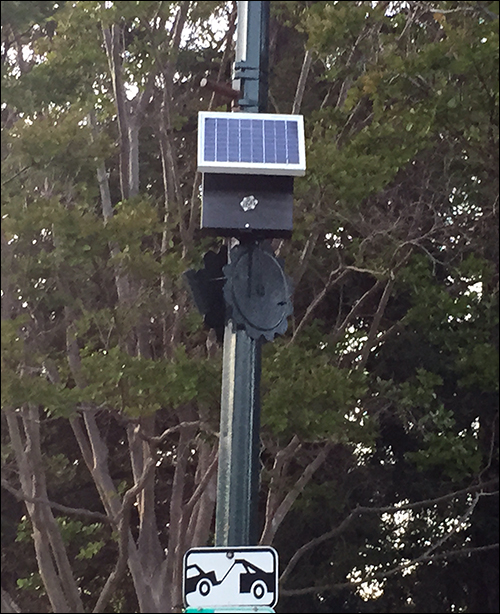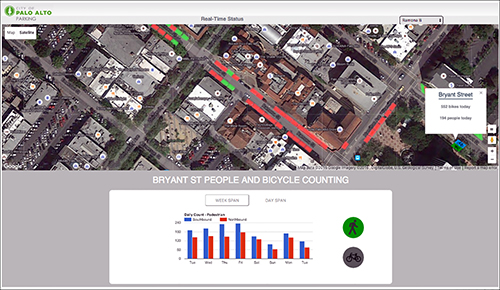Pressures on ever-growing cities become more intense every day, and those pressures—to improve city services, fill potholes, fight crime and make commutes less of a nightmare—are not likely to let up. More than half of the global population currently live in cities, and that share is expected to reach 70 percent by 2025, according to the United Nations.
But Jonathan Reichental—who, since late 2011, has served as chief information officer for the city of Palo Alto, Calif.—thinks that cities, when planning and budgeting for their infrastructure, should take a long-term view of their evolution. “There are different levels of city employees,” he told IOT Journal. “Some are just focused on tomorrow—and I mean that literally, not the day after tomorrow, just tomorrow—so planning a different future isn’t even part of their purview.” But it is critical, he says, for cities to devote resources to thinking about the future and about how “applying technology in a city context might be able to help with the big intractable issues, like traffic and energy management.”
In Palo Alto—a Silicon Valley town, home to Stanford University and a population that is quickly growing beyond the 66,000 residents it had as of a 2013 count—thinking about the future is Reichental’s job. And he has chosen to start with traffic lights.
Granted, Reichental’s first step—upgrading the city’s decades-old electro-mechanical traffic light controllers to a computerized system—was not a major technology leap. But what that transition has enabled, he says, will become one. “Fortunately, our traffic signals are located close to our 44-mile fiber network,” he says, “so the traffic signals could be Internet-enabled, becoming nodes at the edge of the city’s network.”
Palo Alto is at the early stages of installing a network of cameras on traffic light posts throughout the city. Software provided by VIMOC Technologies and deployed on the video cameras can quantify traffic, measure the speed at which it is moving and differentiate between vehicles, bicycles and pedestrians. This differentiation is achieved using what Tarik Hammadou, VIMOC’s co-founder and CEO, calls “pattern-matching algorithms and shape classification” to analyze the video feed.
This data is then transmitted, via an application programming interface (API), to Trafficware, the traffic-management provider that Palo Alto has contracted to manage its traffic light network. VIMOC has installed the software on cameras mounted at one intersection so far, where it conducted a six-month pilot test and hired a third party to conduct an objective analysis regarding the accuracy of the data that the software generated. During these tests, which Hammadou calls “ground-truthing,” the third party conducted a manual annotation on the video to count the vehicles, cyclists and pedestrians captured in the video feed, and these totals were compared with the data generated by VIMOC’s algorithm. The camera network and VIMOC’s analytics software are scheduled to be fully deployed to approximately 45 intersections throughout Palo Alto by the end of this month.
The ability to measure real-time traffic flows will then enable Trafficware to transition Palo Alto’s traffic lights from a timed framework, wherein the length of green lights on arterial streets changes throughout the day, according to historical demand (the quantity of traffic typically moving through those thoroughfares based on time of day) to dynamic (or “adaptive”) management, in which the length of green lights is set in response to real-time demand.
“We can, for the first time, measure traffic and the types of traffic,” Reichental says, “and [use that to] start making informed decisions about intersection design.” That would include understanding the routes that cyclists take and, by correlating that information with accident data, determining optimal placement and design of bicycle lanes and traffic signaling for bikes.
But this type of adaptive traffic management also intersects with the Internet of Things, say Reichental and Hammadou, since carmakers are eager to collect any data that will enable them to build new types of intelligence into their connected-car systems. “Automotive companies are becoming data aggregators,” Hammadou explains. “They want to capture data coming from intelligent infrastructure, and Tesla and Ford are coming to us and asking for data [regarding traffic flow and the presence of cyclists and pedestrians] to come directly to the dashboard in the car.”
It is still very early days for that type of data sharing, Reichental notes, but Palo Alto’s proximity to automotive research labs, such as those that General Motors, Ford, Tesla and Google operate in Silicon Valley, make it a good testing ground for this type of infrastructure-to-vehicle data structure.
Palo Alto has also begun installing occupancy sensors in street parking spots throughout the city. The sensors, embedded into the asphalt, communicate to gateways via the ZigBee wireless mesh network protocol. The gateways transmit occupancy data to VIMOC’s cloud-based servers via a cellular backhaul.
To date, only 60 spots sport the sensors, but 500 spots in the downtown area will eventually do so. According to Hammadou, Google-owned app developer Waze is currently evaluating the data and testing an integration that would direct drivers who use its navigation app to locate the closest available parking spots in Palo Alto. VIMOC also plans on “pushing the data to data aggregators working with automotive manufacturers as part of connected vehicle networks,” he says, so that in-vehicle navigation systems can direct drivers to available parking as well.
All photos courtesy of VIMOC Technologies




